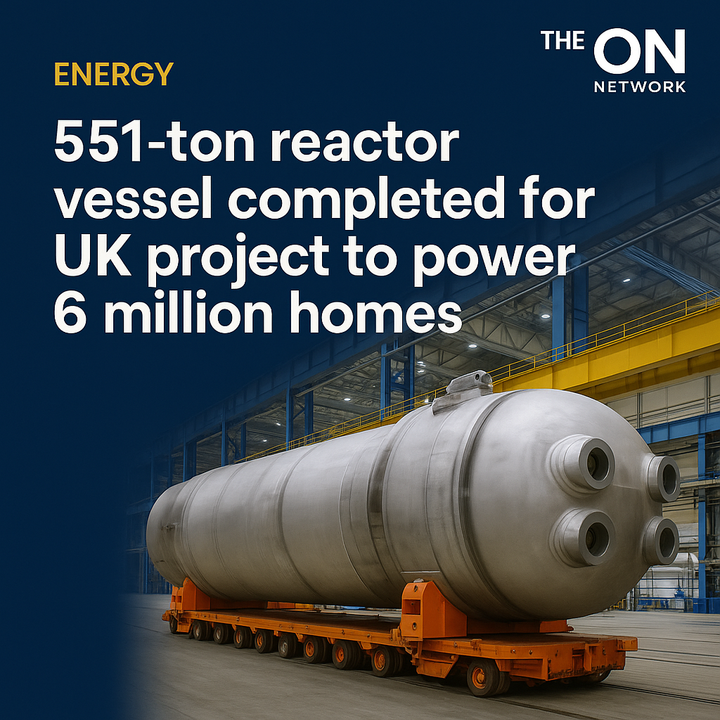The State of AI - October 2025
As October closes, the artificial intelligence (AI) sector is showing signs of both accelerated maturity and growing tension.

What once felt like a high-flying, speculative sprint is evolving into a more complex race: one of infrastructure, governance, real-world application, and mounting expectation.
Here’s a news-style summary of the key shifts.
1. Adoption & Industry Move-In
- According to the annual State of AI Report 2025, published by Air Street Capital, 95 % of practicing professionals now use AI in work or home contexts, and 76 % are paying for AI tools out of pocket — signalling that AI is no longer just a research curiosity, but part of the toolkit. (stateof.ai)
- Across industries the shift is from experimentation to embedded intelligence: firms in manufacturing, logistics, retail and finance are more actively integrating AI agents and large-language models into operations rather than just piloting. (Coherent Solutions)
- Market size data underscores the growth: projections place the global AI market from hundreds of billions today into the trillions within the decade. (Precedence Research)
2. Infrastructure, Chips & Compute Constraints
- The compute backbone is now a central battleground. As one story put it, “the biggest risk in AI might not be the technology, but the trillion-dollar race to build it.” (Business Insider)
- Chips and data-centre capacity are critical. For example, a recent deal between major actors shifted semiconductor dynamics (see next section).
- Also emerging: “sovereign AI” is becoming a strategic goal for many nations, not just a commercial technology. (The Logic)
3. Strategic Deals, Valuations & Caution Signals
- Overvaluation fears are creeping in. In the UK, the Bank of England issued warnings that the rapid inflation in AI-tech valuations may be ripe for a correction. (The Guardian)
- The term “AI bubble” is now part of the public discussion. (marketwatch.com)
- At the same time, large strategic deals illustrate how high the stakes have become. For example, a landmark semiconductors-AI deal shifted power in the supply chain. (ETC Journal)
4. Talent, Education, Ethics & Regulation
- Universities and governments are responding: more law schools are mandating AI training; public servants are being schooled in AI tools; and universities are forging partnerships to upskill the future workforce. (Artificial intelligence)
- Public attitudes are shifting. A survey in Switzerland found increased scepticism toward AI decision-making, and stronger calls for human oversight. (arxiv.org)
- On the regulatory front, the governance infrastructure remains fragmented. Europe is advancing AI policy, but still perceives itself as trailing the U.S. and China. (Science|Business)
5. Business Value vs. Hype
- While many companies talk about “agentic AI” (AI systems that act autonomously to carry out tasks), major analyst firms caution that >40% of such projects will be scrapped by 2027 because of unclear ROI. (Reuters)
- Reports emphasise that the real challenge is turning AI from “cool pilot” into “consistent business driver,” which involves data architecture, talent, governance, and integration — not just model licensing. (PwC)
6. Global Landscape & Geopolitics
- Supply-chain developments in semiconductors highlight national power plays: for example, China’s wafer-self-sufficiency is rising rapidly and the U.S./Western hubs are doubling down on domestic fabs. (ft.com)
- The concept of “sovereign AI” is gaining traction, meaning nations want to develop, deploy and control AI models internally to avoid external dependencies. (The Logic)
Buy & Sell Bitcoin, Dollar Cost Average management abd pay your bills with Bitcoin on the the best Bitcoin only Exchange.
What this means for you (and your “Sovereign Builder” angle)
Given your focus on self-sovereignty, digital autonomy, survival and decentralized tech, here’s how this state of AI matters:
- Compute & Infrastructure Risk: The backbone of modern AI is still hardware, power and data pipelines. For someone building resilient systems (off-grid, sovereign, self-hosted), this means the risk is not just “can I run AI,” but “can I run it without depending on big-tech or a fragile supply chain.”
- Agentic AI Reality Check: Many vendor slides talk about “autonomous agents,” but business value is still uneven. For your audience of survivalists, builders and autonomous operators, it’s a signal: treat AI tools as assistants, not magic bullets.
- Governance & Ownership: With public trust eroding and regulatory frameworks still catching up, there’s a huge opportunity (and responsibility) to build AI systems aligned with values like decentralization, privacy, and self-sovereignty.
- Global Dependencies: The move toward sovereign AI suggests a bifurcation: parts of the world will rely on closed-ecosystems, others on open/decentralised stacks. For you, this could align with building systems that are resilient across jurisdictions.
- Hype Management: Your content ecosystem often talks about real tools and practical independence, not hype. The AI world is now moving from “can we?” to “are we doing it well?” That narrative fits your brand of depth over spectacle.
Final Take
As we wrap October, the AI sector isn’t bursting with unbridled promise anymore — it’s moving into a harder phase: scaling, integration, dealing with risk, and answering the question: what real business value will this deliver, and what dependencies will it impose?
For anyone focused on autonomy, sovereignty and prepping for less-centralised futures, the message is clear: yes, AI is powerful — but the dependencies behind it (power, compute, governance, supply-chains) are heavy.
Building your own stack, or at least understanding your exposure to big-tech CONTROL, is more important than ever.
With over 30 million users worldwide, Notion has evolved from a simple note-taking app into a powerhouse for project management, content creation, and team collaboration.
But what truly sets it apart in is its cutting-edge AI capabilities.
Recent AI-Industry Headlines — Late October 2025
Bank of England warns of AI market correction; gold hits new $4,000 an ounce record – as it happened
The Guardian, Oct 8 2025 — Central bankers signal concern that overheated AI valuations could trigger a tech-sector correction, echoing dot-com-era dynamics.
Why the biggest risk in AI might not be the technology, but the trillion-dollar race to build it
Business Insider, Oct 2025 — Big Tech’s capital-expenditure war for compute power intensifies; trillions are flowing into chips, GPUs and hyperscale data centres.
China’s wafer shake-up and the rise of “Silicon Desert”
Financial Times, Oct 2025 — China accelerates domestic chip manufacturing in arid interior provinces to secure supply-chain independence from Western fabs.
State of AI 2025: Five key charts for Europeans
Science Business, Oct 2025 — New data visualizations show Europe’s lag in compute investment and AI start-up funding relative to the U.S. and China.
Altman teases EroticAI
Axios AI Plus, Oct 2025 — OpenAI CEO Sam Altman hints at a controversial new “EroticAI” project exploring emotional and sensory model interactions.



Comments ()